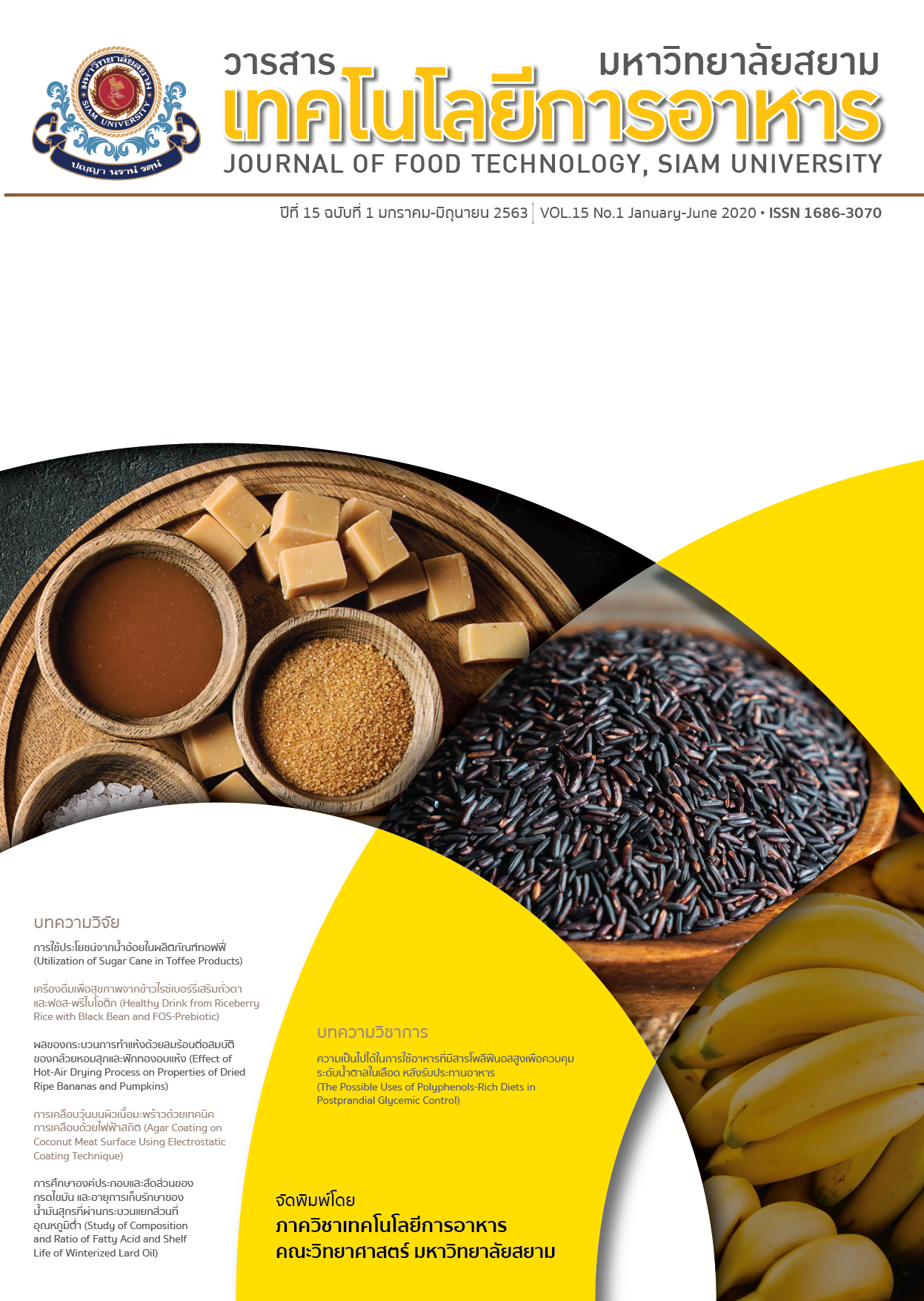Agar Coating on Coconut Meat Surface Using Electrostatic Coating Technique
Main Article Content
Abstract
Electrostatic coating technique using direct current at low voltage was employed for agar coating on coconut meat surface. The study revealed that 0.5-1 %w/v agar solutions can be used as coating materials. The agar coating layer (ACL) of the electrostatic coated sample was 150 to 200% thicker than that of the samples coated using the tradition method. This could be due to the action of electrostatic attraction force so that the agar molecules were accumulated around the sample surface and therefore accelerated gel formation. The thickness of the ACL increased with the voltage concentration and coating time, while the ACL’s concentration strongly depended on the coating temperature. It was also found that the ACL on the electrostatic coated sample was more uniform while the process time was much shorter. The results suggests that electrostatic coating technique can be applied to a food coating process as it can shorten the process time and control the uniformity, thickness and density of the coating layer.
Article Details
Copyrights of all articles in the Journal of Food Technology available in print or online are owned by Siam University and protected by law.
References
[2] Pootao, S. and Kanjanapongkul, K. (2016). Effects of ohmic pretreatment on crude palm oil yield and key qualities. Journal of Food Engineering. 190: 94-100.
[3] Klinsoda, J. (2016). Edible coating and film for vegetables and fruits. Institute of Food Research and Product Development Journal. 46: 33-39.
[4] Chaisomboonphan, P. (2012). Study and analysis of iron color coating technology using sustainable industry development. Master’s thesis. Rajamangala University of Technology Phra Nakhon. (In Thai).
[5] Trirongrat, W. (2014). Defectives reduction in steel spray painting process using FMEA technique: Case study of Gold Press Industry Co., Ltd. Rajamangala University of Technology Thanyaburi. (In Thai).
[6] Tsuchiya, Y. and Hong, K.C. (1965). Agarose and agaropectin in gelidium and gracilaria agar. In Proceedings of the Fifth International Seaweed Symposium, Pergamon. August 25–28, 1965. 315-321.
[7] Rioux, L.E. and Turgeon, S.L. (2015). Seaweed carbohydrates. Seaweed Sustainability. Elsevier Science Publishing Co Inc.
[8] Somboom, N. (2013). Properties of agar and fish gelatin mixed gels. Master’s Thesis. Prince of Songkla University. (In Thai).
[9] Pomfret, R., Sillay, K. and Miranpuri, G. (2013). Investigation of the electrical properties of agarose gel: characterization of concentration using nyquist plot phase angle and the implications of a more comprehensive in vitro model of the brain. Annals of neurosciences. 20(3): 99–107.


